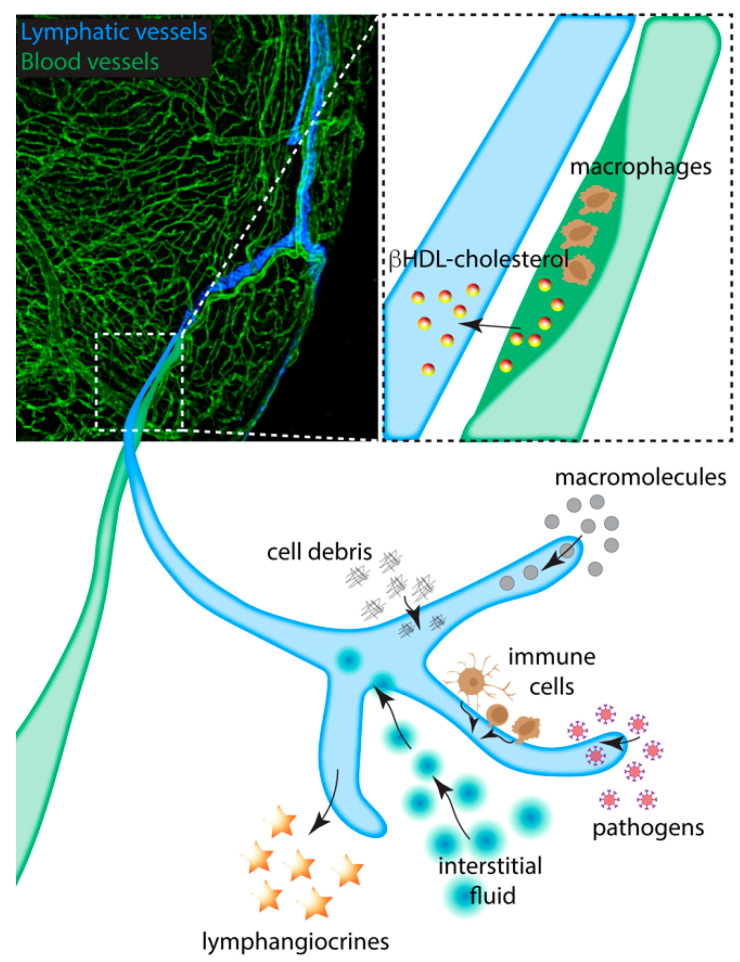Figure 2.
The roles of the cardiac lymphatic system in heart disease and regeneration. Coronary artery occlusion by atherosclerotic plaque causes myocardial infarction. The plaque is composed of infiltrated macrophage and cholesterol deposits; cardiac lymphatics running along the artery provide a conduit for cholesterol as a βHDL complex to be removed from the heart and returned to the liver (boxed area). During development, homeostasis and disease, the cardiac lymphatics uptake cell debris, macromolecules, immune cells, pathogens and fluid. Insufficiency of such removal can result in inflammation and edema induced fibrosis, which is detrimental for clinical outcomes. The lymphatic vasculature responds to such insufficiency by the expansion of the lymphatic capillaries after damage to the myocardium. The lymphatic endothelial cells are also a source of lymphangiocrines, excreted proteins that promote regeneration and growth of the myocardial tissue.

